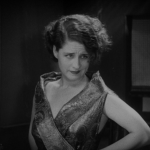 |
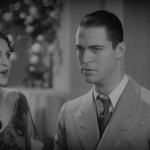 |
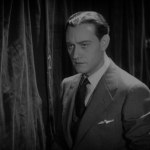 |
| Jerry Norma Shearer |
Ted Chester Morris |
Paul Conrad Nagel |
| Released by MGM | Directed By Robert Z. Leonard |
||
Proof That It’s Pre-Code
- To the sound of a braying donkey, Paul notes, “That could be Ted.”
- Jerry and Ted clearly have a healthy sex life even before they start cheating on one another.
- Shearer’s portrayal of a good woman with a healthy sexual appetite who is not condemned for pursuing either in or out of marriage was revolutionary at the time.
- The amount of drinking in this film is ‘practically every scene’.
The Divorcee: Bucking the Norm
“And I thought your heart was breaking like mine. But instead you tell me your man’s pride can’t stand the gaffe. . . . I’m glad I discovered there’s more than one man in the world while I’m young and they want me. Believe me, I’m not missing anything from now on. . . . Loose women are great, but not in the home, eh, Ted? The looser they are, they more they get. The best in the world, no responsibilities. Well, my dear, I’m going to find out how they do it. So look for me in the future where the primroses grow. And pack your man’s pride with the rest. And from now on, you’re the only man in the world that my door is closed to!”
The Divorcee is often listed as one of the most important and scintillating films of pre-Code Hollywood, usually to the confusion of many who actually watch it. It’s a 1930 movie no doubt, coming only a few years after the first part-talkie and less than that after the first all-talking picture. Filmmakers will still learning when and how to apply sound, actors were still figuring out how to emote and gesticulate, and writers were learning the difference between theatrical dialogue and film dialogue.
These traits of The Divorcee can be off-putting, though I can tell you a lot of films from 1930 were far more awkward and stilted than this film, let alone lacking any sense of visual wit. The Divorcee is a high water mark for early talking pictures, a fine job at grappling the new medium with wit and verve. The scandalous subject matter being portrayed by high class MGM with good-girl star Norma Shearer at the center is icing on the cake, a foray that makes the unseemly respectable and challenges the audience not to sympathize.
Let’s talk out the plot: Jerry (Norma Shearer) and Ted (Chester Morris) are blissfully in love, much to the chagrin of their circle of well sauced but lust-filled friends. These include Paul (Conrad Nagel) and Don (Robert Montgomery). Paul is so upset when the two announce their engagement that he gets completely blitzed and ends up crashing his car, permanently disfiguring Dorothy (Judith Wood). Paul, seeking atonement, marries her in her hospital bed, while we see Jerry and Ted married in an operatic ceremony in contrast, though their futures may be more aligned than anyone thinks.
Ted and Jerry are still revoltingly in love until the night of their third anniversary arrives. Their boisterous group of friends arrives with an unexpected extra reveler named Janice (Mary Doran) who can’t keep her eyes off Jerry’s man. When Jerry walks in on her embracing Ted in the kitchen, she realizes something is amiss, and Ted takes her to their bedroom to explain that the two had had a drunken one night stand a month back. Ted tries to convince her that it “doesn’t mean a thing”, but he has the worst reasonings imaginable for why she should forgive him. (Example: “If I killed someone, you’d go all the way and back for me.” That’s great, Ted, good job.)
Jerry is devastated. That night, alone with the accommodating Don, she can’t concentrate on anything but the smile on Janice’s face and Don’s masculine insistences. She can’t unwrap how her husband could say he’s so happy and still philander, especially with the casual ease to which he wants her to accept it. When Don asks what’s wrong, she explains, “I’m just trying to hang onto the marvelous latitude of a man’s point of view.”
In one of the film’s most famous and beautiful sequences, we see Don and Jerry’s hookup explained and illustrated without a word. During her silent ‘walk of shame’ the next day, we can read that Jerry has learned that Ted mantra of it ‘not meaning a thing’ isn’t true, and there have been deep, emotional consequences to herself because of her actions. But did she do the right thing?
Well, no, for as good and just it was for her to do it to teach Ted a lesson about the double standard, she still loved him and knew that this would hurt him. She informs him of the affair bluntly when he returns home from a trip to Chicago– “I’ve balanced our accounts. That’s all.” — and sets in motion the end of their marriage. That’s when the outburst at the top of the review kicks into high gear, as both realize they’ve hit a turning point in their relationship. His pride has crashed into her belief in equality, the hard place has met the rock. They quarrel and head to court.
While Shearer is certainly pretty up to this point, Jerry doesn’t begin to look glamorous until after the divorce– beautiful dresses, gorgeous hair, lavish jewelry, all the stops come out. Free and young and told by her other divorced friend “All men are fair game”, she’s going to continue to revenge herself on Ted and the double standard, treating, to paraphrase another pre-Code film, men like the way men treat women.
She makes a good go of it until she encounters Paul again after so many years and agrees to marry him. There’s still the matter that he’s married to Dorothy, and, when Dorothy confronts the two of them, Jerry can’t go through with it. She knows the pain that her divorce has caused herself, but also that Paul’s kind of an asshole and deserves his miserable marriage. Or at least that’s how I read it.
Spoilers.
A lot of people… okay, everyone nowadays, complains about the film’s ending. Jerry and Ted reconnect a year after their encounter at New Years. Things are strained, but essentially they work it out, embracing, fittingly enough, as strains of “Auld Lang Syne” play.
The main complaint with the finale is that Ted’s a jerk and Jerry deserves better, and, hell, no argument here. His initial affair, his piss-poor attempts to conceal, and his brazen insistence to hide it under a shield of masculine privilege and emotional detachment are all Grade “A” unrepentant heel stuff. And his reaction to Jerry’s ‘balancing of the books’ is a mix of anger, disappointment and drunken misbehavior embodies the fact that the masculine posturing he’s exhibited so far is really a guise for the fact that he’s still a petulant child. But he realizes and comes to regret his mistake. While he still wants to maim whoever defiled his ex-wife, he finally comes to terms with that and realizes he must accept her as an equal as he truly, deeply does love Jerry.
And Jerry, who got to live the life of a divorcee (with that reputation that will drive a certain kind of gentlemen wild), we get to see that she simply doesn’t enjoy it very much. Sure, there was the fun and excitement in a few initial affairs, but by the time we catch up with her on the train, she clearly wanted what she had before. That ‘ignorance is bliss’ sort of marriage rather than the carefree life of a single person. She clearly craves the stability, too. While Paul was certainly a contender for her affection, she sees him more as a respectable, equally compromised person rather than someone she truly loves and cares about. When Dorothy pleas for Jerry not to take Paul away, Jerry refuses Paul not just out of friendship and pity, but the realization she’d be another ‘Janice’ to someone and she can’t stand it.
Jerry’s decision and desire to go back to Ted may not be very progressive looking on the surface, especially since Morris plays such a cold, hard cad, but it’s the reconciliation that matters. Ted learns he has to come to terms with Jerry’s first infidelity and the many more that his mistake led to, and matures accordingly. Jerry realizes that it takes patience and understanding to fix problems rather than quick, hurtful solutions.
That probably sounds condemning of her sexual liaisons, but it’s apparent that while Jerry definitely wants and enjoys them, throughout she also wants to be happy with Ted more. Ted must swallow his male pride that he used as a shield after Janice. Ted must respect Jerry as a sexual woman. And the audience must as well.
End spoilers.
It’s undoubtedly with some sense of irony that many of the best moments in The Divorcee are dialogue-free– Jerry’s frustrated decision to cheat, her suffering through the aftermath, and the party scene where she sees Ted for the first time after their divorce. These moments are visually effective since they contrast much of the film’s too-talky (and very early talkie) dialogue quite well, creating memorable scenes through simple visual storytelling.
The acting is fine. Montgomery as Don is light years ahead of practically every other actor in Hollywood in terms of both sexiness and charm as well as being casual underneath a microphone. Morris is blunt and perhaps a little too easy to dislike, but does a fine job with the inner turmoil he constantly subjects himself to. And Conrad Nagel is serviceable as Paul the man whose stupid decision continues to reverberate well into his life beyond being able to be repaired, which contrasts nicely with Jerry and Ted’s continuing crisis.
Norma Shearer would follow this film up with other films about divorcees getting to live out their wildest fantasies (while still ending up back in their cuckolded husband’s arms in the final reel) in Let Us Be Gay, Strangers May Kiss and Riptide. Private Lives, too, to an extent. Some of those films are successes, some are definitely not, but Shearer is stunning in each. She has this ability to punch through the film at the right moments, to be able to be playful and witty while keeping the audience aware of both her innocence and carnality. It’s easy to dismiss The Divorcee as a clunky relic, but its moments of electricity from Shearer and the daring way it confronts a world that so highly prized purity make it a stunner.
Gallery
Right click and choose ‘view image’ to see them in full size!
Trivia & Links
- The review above is actually an updated review I wrote in March of 2015. The old one from 2010 was not very good, so I’ll go ahead and spare you from it.
- If you get the DVD of this, it includes an excellent commentary track which I highly recommend listening to.
- The movie opens with an acoustic version of “Singin’ in the Rain” and later plays “Good Times Are Here Again”– both songs being anachronistic to when the scenes are set, but I don’t think any serious harm is done because of it.
- Based on the book The Ex-Wife by Ursula Parrott, which lacked the tidy ending of the film. When the book was originally published, it was seen as so controversial that it was published anonymously. Unsurprisingly, Parrott went through four marriages of her own.
- The backstory on how Shearer got the film is pretty legendary (it was originally planned for Joan Crawford), so I’ll include TCMDB’s rundown of it here. Shearer wanted the part, but was turned down by her husband, the production chief Irving Thalberg, as he didn’t think she was right for the role.
To convince her husband that she wasn’t too ladylike for the picture, Shearer enlisted the help of a photographer who was just getting started in the business. George Hurrell had set up shop on the West Coast, where his first celebrity client was Latin lover Ramon Novarro. He had shot Novarro costumed for a variety of operatic roles as part of the star’s campaign to become a classical singer. Shearer was so impressed that she hired Hurrell herself. She mussed up her hair, wrapped herself in silver lam – and lounged suggestively as he shot away. The photos convinced Thalberg that she could handle the role and, according to Hollywood legend, significantly improved their romantic life as well.
With Shearer in the lead, Thalberg gave The Divorcee all the attention a top production at MGM could get. Adrian designed the perfect wardrobe for her, while writer Francis Marion made some uncredited script changes, creating the kinds of lines and scenes that would show Shearer off to full advantage. For her part, the star insisted on endless rehearsals and retakes until her performance was just right. The film previewed so well, that it was one of the few MGM productions released without further tinkering from Thalberg, whose efforts in that direction had brought the studio the nickname of “Retake Valley.”
- The movie references ‘a floating grass widow’, which means a woman whose husband is often away.
- Angela at The Hollywood Revue calls this one essential.
- Karen at Shadows and Satin has a long list of everything she loves about the movie (one of which being that quote at the top of the review which I stole from her site). Besides things like seeing Norma Shearer percolate coffee, she makes this observation:
The comic relief supplied by Zelda Sears, who played Jerry’s maid, Hannah, and who also wrote the treatment for the film. She has a small role – just pops in now and again to utter a few one-liners and then she’s on her way. My favorite is the scene where she tells Jerry that she’d like to leave early because she has a date with the butcher. When Jerry slyly asks if his intentions are honorable, Hannah sighs heavily and rejoins, “I’m afraid they are. He just wants to keep a good customer.”
- The Nitrate Diva talks about the oddness of the film (calling it a Janus) and dissects it quite brilliantly. She also talks about the film’s main visual motif of shots of hands rather than that of the whole person:
There’s a very significant dissolve from the priest reciting the service to this shot of the bride and groom taking their vows. Notice how abstracted it is—no heads, no personality. It’s a picture of Marriage, not of our marriage, not a union between two living, breathing people. It reminds me of a glib Victorian illustration. […]
Hands actually play a very important part in this film. Once Jerry separates from her husband and embarks on a series of affairs, we see them transpire in rapid succession through a bunch of shots of hands meeting over tables.
I love this clever montage for its acidly funny encapsulation of relationships. I’d also point out that the lack of faces allows the viewer to put herself in Jerry’s place and experience the vicarious rush of her lusty divorced life. But, most important, the sequence reminds me of Jerry’s and Paul’s weddings—and not just in a simple “that was right, this is wrong” kind of way.
On the contrary, I think all this hand-play encourages us to see both extreme forms of relationship—lifelong commitment and casual sex—as equally dangerous if undertaken without thought…when you leave your head out of the picture.
- The New York Times via Mordaunt Hall sniffles at this one, noting:
With the possible exception of Jerry, played by the charming Miss Shearer, none of the characters is particularly real. They appear and go, saying their say as if dangled by the director. There is the jesting knave, the fool and the selfish lover. Yet the players cannot be held to account for being mere puppets. It lies with Robert Z. Leonard, the director, the adapters, and possibly to some extent with the censor.
- For anyone curious about the numerous differences between the movie and the hard-to-find book, the inscrutable Movie Diva has a rundown:
Patricia (renamed the androgynous Jerry for the film) has married Peter; she thinks he’s her true love. He’s handsome, but shallow and mean. After he cheats on her, she does the same, and discovers there is, after all, no Single Standard. He hits her once in a while and shoves her through a glass French door. “Brought up under the tattered banners of ‘Love Everlasting’ and ‘All for Purity’ we have to adapt ourselves to life in the era of the one night stand.” Patricia uses “sex as an anaesthetic.” The men she likes she doesn’t sleep with (one of them is dying of syphilis). She runs around the track at the gymnasium after work and says she’s “Running through days of posing as an efficient young business woman, through nights of posing as a sophisticated young woman about town. Running from the memory of Peter, towards something or nothing, it didn’t matter which.” Her ex-husband is never a serious reunion candidate (although she does see him and sleep with him on occasion). And when she finally gets her divorce, “It is so silly to mind. Just an incident in the career of a Modern Woman. What the hell!” She eventually marries a pal and sets off on an around the world cruise, hoping to run into her new true love (unfortunately married, and now stationed in Japan).
Francine Prose writes in a recent introduction to the novel, “Yet Ursula Parrott’s dead-accurate ear for small talk is by no means the only reason why the novel impresses us as so oddly modern. What seems even more contemporary is a certain recklessness in its tell-all confessional tone (a tone we have come to expect from the celebrity bio and talk show guest with the checkered past) as well as in the events it describes–events that cannot help surprising us, a new generation of readers who, like every generation imagine that we have invented sex and self-destructive behavior.” Parrott sold 100,000 copies of the novel in 1929, and the movie rights for $20,000, a staggering sum in the crash year. She wrote tirelessly, novels and short fiction for women’s magazines, supporting herself in a style to which few working women in the 30s could aspire.
- Emma at Let’s Misbehave sums up why she loves the movie and why its appeal is enduring:
Norma Shearer triumphs as both the adoring wife and controversial divorcee. She is bubbly and fluid and surprising alluring in her golden, revealing costumes towards the end of the film. Her performance centered the film and was a good choice for the Academy Award for Best Actress. However, she was assisted by the well derived plot and cast who shape the exploration of changing morality in America. It is in its themes that the films significance lies. It probes the existing sexual double standards from the viewpoint of a middle ground between rigid Victorian and the altering Twentieth Century values. The film, despite its age, is surprising modern and relevant to contemporary audiences and well worth a watch.
- A more in-depth discussion of this movie is available in 3rd issue of The Pre-Code Companion. You can also see other available issues and topics covered in the series by clicking here or on the banner below.
Awards, Accolades & Availability
- This film is available on Amazon as part of the second Forbidden Hollywood collection, along with A Free Soul, Night Nurse, Three on a Match, and Female.
Comment below or join our email subscription list on the sidebar! |
||
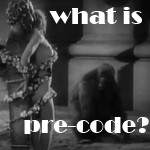 |
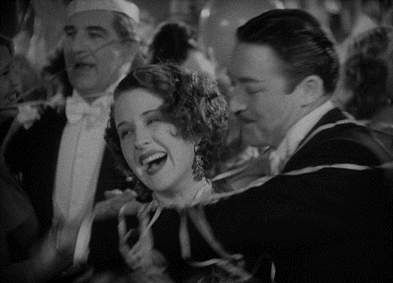 |
 |
 |
 |
|

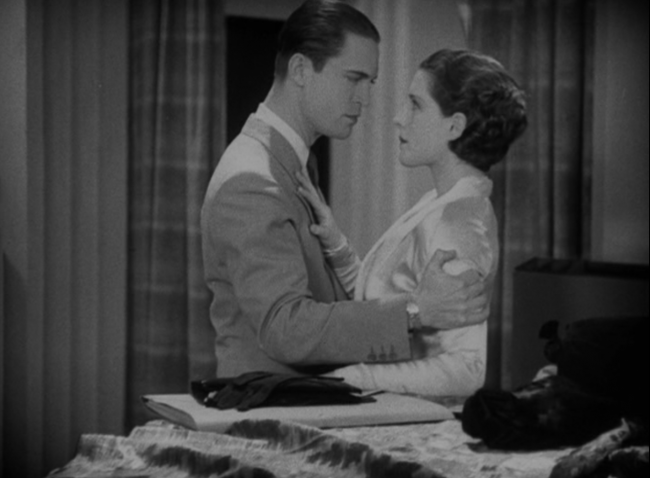

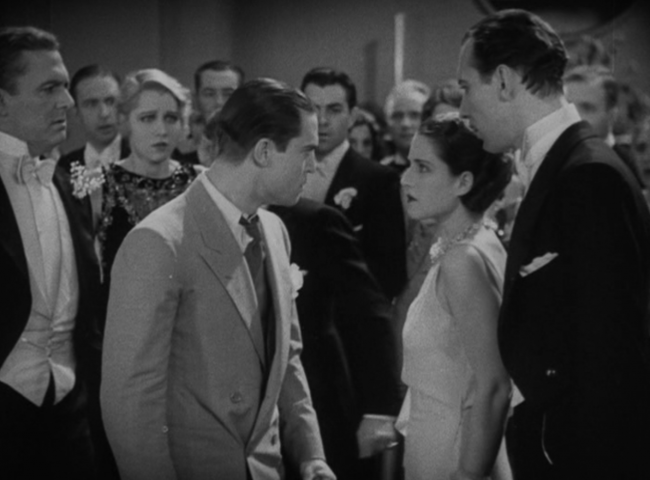
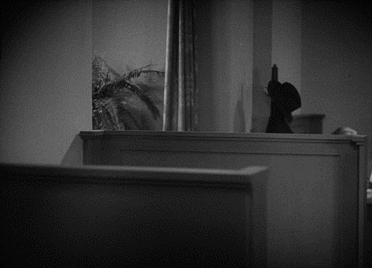
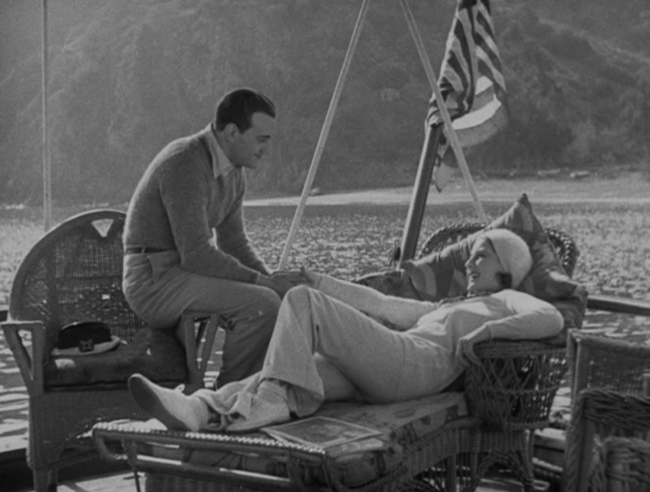
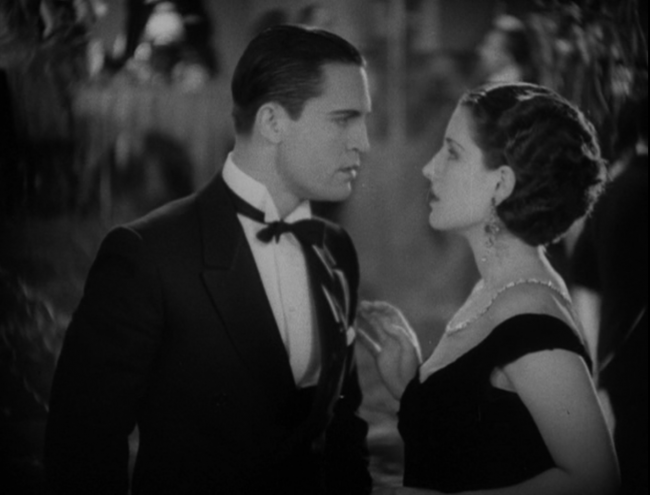
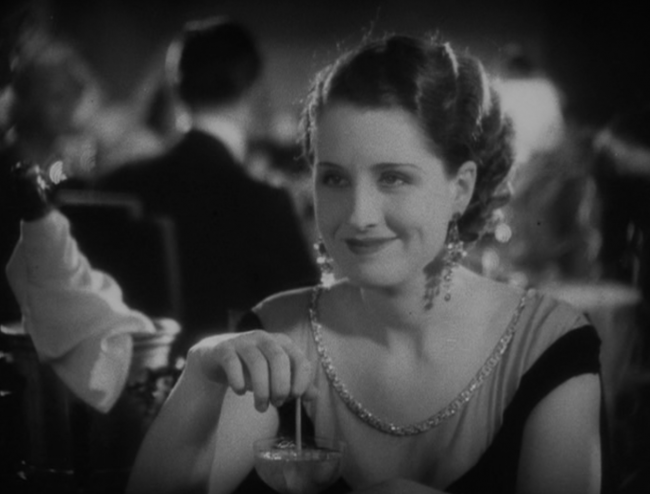
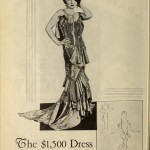
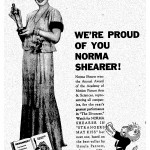
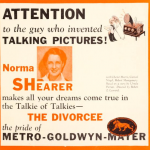
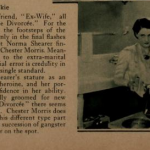
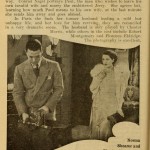
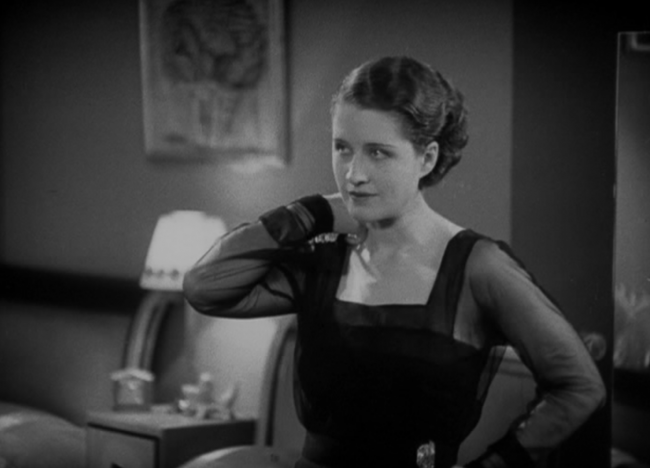
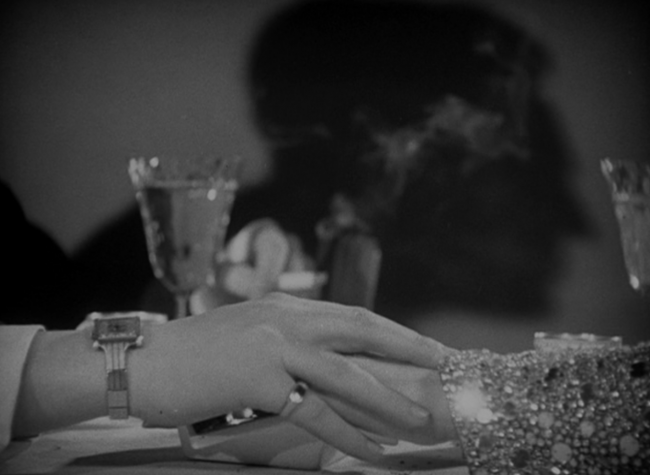

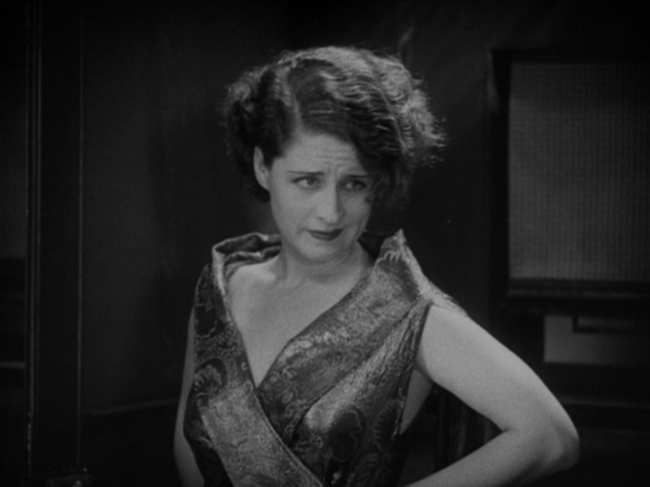

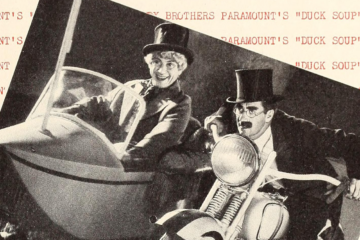


6 Comments
shadowsandsatin · March 8, 2015 at 10:20 am
Loved your write-up, Danny — and this made me laugh and laugh: “. . .but also that Paul’s kind of an asshole and deserves his miserable marriage. Or at least that’s how I read it.” Also, I may be alone in this, but I’m glad that Jerry and Ted wound up back together. Unlike Strangers May Kiss, where Neil Hamilton showed himself more than once to be a complete ass, I thought Ted made a mistake and paid for it (drinking too much, losing his job, etc.) — thereby earning his way back into Jerry’s arms. I sure would like to get a hold of Ex-Wife — it sounds wild!
Danny · March 8, 2015 at 11:19 am
Thanks, Karen. 🙂 And Ex-Wife indeed sounds crazy, though I had some trouble finding copies anywhere, sadly.
Duchess · May 9, 2017 at 10:23 pm
Thought it was intriguing that Jerry actually rises in life (getting a London posting as she rises in her career; affording a luxe apartment and looking better than ever); while Ted loses his job and drinks a lot more while enjoying it less, while going around with a 5 o’clock shadow. At the time, it was a lot cheaper to live in Paris rather than NYC, so maybe getting kicked in the ass a few times may have humbled the guy. I rather liked the “older and wiser” ending. Robert Montgomery steals every scene he’s in; whatta pro!
Trilby O'Feral · June 4, 2018 at 2:49 pm
What a great write-up of an excellent movie! Enjoyed reading this so much. Thank you!
Donald Sosin · June 12, 2019 at 4:28 am
Wonderful analysis. Really want to see the film. Why is “Singin’ in the Rain” anachronistic? It was written in the 20’s and part of a group of old trunk songs that Betty and Adolph has to work into their script. Glad to know about your site (I get a daily newsletter from Italy and this review was linked)
Victoria Anne Jarvis · March 27, 2021 at 5:02 pm
Nice work….Wish you wouldn’t use words like “asshole”. It’s offensive and demeans the quality of your workmanship.
Comments are closed.